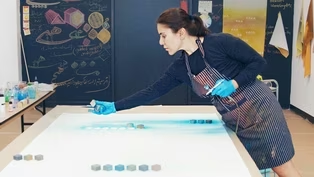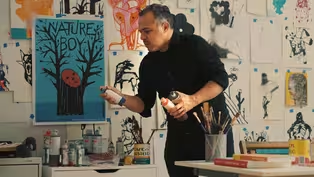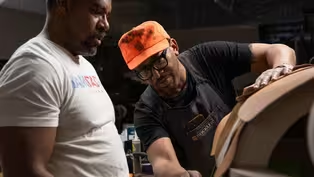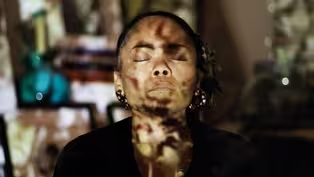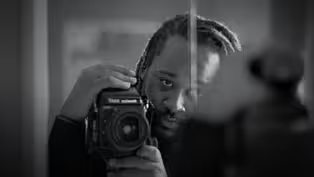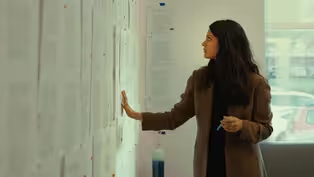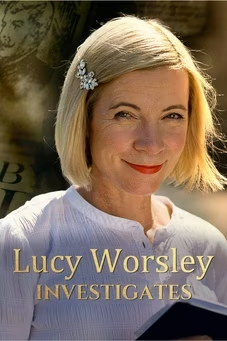
House of Aama: Threads of Legacy
Special | 15mVideo has Closed Captions
Explore the creative process and familial narrative behind acclaimed fashion label House of Aama.
Explore the unique creative process and familial narrative behind the acclaimed fashion label House of Aama, led by Akua Shabaka and her mother, Rebecca Henry. The film delves into their creative process and spiritual approach to fashion, anchored in personal archives, Black folklore, and storytelling.
Problems playing video? | Closed Captioning Feedback
Problems playing video? | Closed Captioning Feedback
Support for American Masters is provided by the Corporation for Public Broadcasting, AARP, Rosalind P. Walter Foundation, Judith and Burton Resnick, Blanche and Hayward Cirker Charitable Lead Annuity Trust, Koo...

House of Aama: Threads of Legacy
Special | 15mVideo has Closed Captions
Explore the unique creative process and familial narrative behind the acclaimed fashion label House of Aama, led by Akua Shabaka and her mother, Rebecca Henry. The film delves into their creative process and spiritual approach to fashion, anchored in personal archives, Black folklore, and storytelling.
Problems playing video? | Closed Captioning Feedback
How to Watch American Masters
American Masters is available to stream on pbs.org and the free PBS App, available on iPhone, Apple TV, Android TV, Android smartphones, Amazon Fire TV, Amazon Fire Tablet, Roku, Samsung Smart TV, and Vizio.
Buy Now
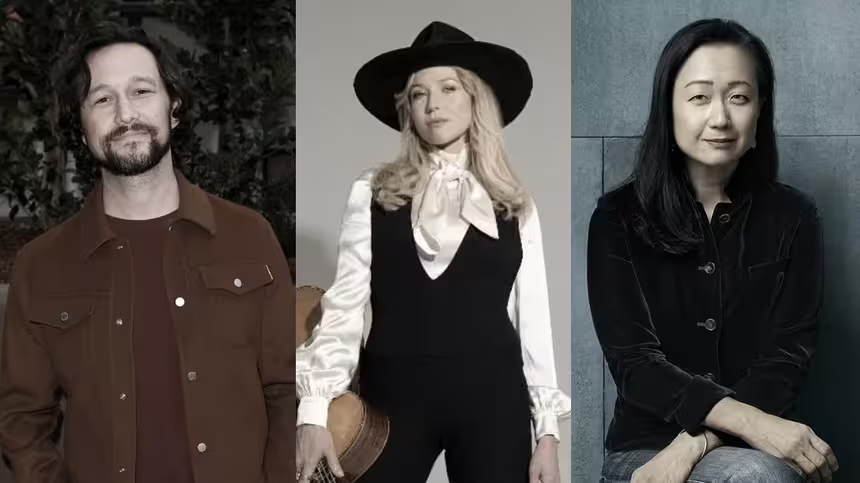
A front row seat to the creative process
How do today’s masters create their art? Each episode an artist reveals how they brought their creative work to life. Hear from artists across disciplines, like actor Joseph Gordon-Levitt, singer-songwriter Jewel, author Min Jin Lee, and more on our podcast "American Masters: Creative Spark."Providing Support for PBS.org
Learn Moreabout PBS online sponsorshipMore from This Collection
This documentary shorts series from American Masters and Firelight Media follows emerging cultural icons – creators who bring insight and originality to their craft – on their journeys to becoming masters of their artistic disciplines.
Maryam Taghavi: Estranged Letters
Video has Closed Captions
An Iranian-American artist’s work uses abstracted Persian calligraphy to signify migration. (15m 4s)
Edel Rodriguez: Freedom is a Verb
Video has Closed Captions
Discover this portrait of the Cuban-American graphic artist and graphic novelist Edel Rodriguez. (17m 14s)
Norman Teague: Love Reigns Supreme
Video has Closed Captions
Follow furniture maker and conceptual artist Norman Teague as he prepares for a solo exhibition. (16m 23s)
Danielle Scott: Ancestral Call
Video has Closed Captions
Follow Danielle Scott as she makes art that explores the wretched pain and beauty of her ancestors. (15m 44s)
Gioncarlo Valentine: Exposures
Video has Closed Captions
Photographer Gioncarlo Valentine documents intimacy as a radical act of self-exploration. (18m 13s)
Sarah Thankam Mathews: After All This
Video has Closed Captions
Follow author Sarah Thankam Mathews as pressure mounts to follow up her acclaimed debut novel. (15m 38s)
Video has Closed Captions
Follow the Broadway choreographer as she elevates the possible with bold explorations of movement. (15m 25s)
Providing Support for PBS.org
Learn Moreabout PBS online sponsorship(gentle music) - We think of fashion as a way to tell mythological and archival stories of the Black experience.
(gentle music) And to remember those who have come before us so that their stories may last forever.
(gentle music) We wanted to talk about the migration of African people from Africa through the Caribbean and through the Southern United States.
(gentle music) And so, we used the folk hero, "Anansi the Spider," to tell that story because as he migrated, sometimes his stories changed, sometimes his gender changed, but what was the continuity was the fact that he traveled as the African people moved.
(gentle music) Through the weaving of "Anansi," we come together as people, and we tell these stories through the diaspora.
(weaves crackling) (gentle music) (wheels whirring) (hooter honks) (ambient music) (bell trilling) I was brought up in a family of Southerners.
My mom's from Louisiana, my father's from South Carolina, and there was always a notion in our family of not accepting things as they were, especially with my mom.
She did everything from scratch.
(ambient music) My mother used to say in the summer, "Okay, I'm gonna go to the fabric store and I'm gonna buy the fabric, and I'm gonna make all my summer dresses.
One for each day of the week.
Because it was important for you, even if you had store-bought clothes, for you to add your own personal touch and narrative to it."
(ambient music) (lips smacking) (string swishes) (birds chirping) - Growing up, I would watch my mother making arts and crafts, quilting, and sewing at home when she would come home from work.
(lively music) My dad, he always had a different type of flute, whether it was (laughs) a bamboo flute, a classical flute, and he also was a djembe master drummer.
I started to explore my own way of freedom of expression in middle school, and one of the things that I felt was really appealing to me was creating garments, upcycling vintage clothes, and that was a part of who I was and my identity.
(lively music) And that was really the inception of House of Aama at the time.
(lively music) (hangers rattling) When I felt like, "Wow, we really, we have made a step in the right direction," was when we received the CFDA Vogue Fashion Fund Award in 2021.
This was the first major award we received.
So, yeah, I've been a fan.
I actually went to one of your shows like a couple years ago.
- Mm-hmm.
- And I was still a student at Parsons, and I went- (laughs) - And you know, you called me the big dog.
But really, I feel like, I mean, when we're on those Zoom calls and we're talking about all of the different aspects of our business, it's inspiring.
We all need mentorship.
We all need help.
- Being able to sit amongst other designers that I really admired and I looked up to, and being able to be in that same conversation and to be looked at as a brand of that value was really a memorable time.
Did our first New York Fashion Week show.
(ominous music) Straight from the runway, we had Gabrielle Union wearing our La Sirene dress.
This was our first-ever major celebrity placement, and it went viral.
We ended up getting a cover story with that same dress on Chloe Bailey.
And I think that kind of catapult us into being known for that mesh La Sirene dress.
The garment has been able to tell different stories.
(ominous music) (singers chanting) My mother and I truly consider ourselves folkloresses.
We are unpacking familial stories, historical narratives and looking at archives as a way to perform and create these collections.
(singers chanting) Our focus has always been to look at how our familial connections in the Southern United States and the Caribbean Islands, and how that then plays a role into how we want to tell our stories in our garments.
(singers chanting) ♪ The judge, I can see, incredible ♪ ♪ Incredible ♪ ♪ At times, I can see miserable, ooh, yeah ♪ (uplifting ominous music) - Working on the show and not being able to, at that time, stop.
- Yeah.
- We couldn't pause.
We had to keep going.
We were shooting the next day.
- Yes, and I don't think that your dad would've wanted us to have stopped.
We just had to keep going.
And then later, when we were able to properly address your father's passing, I'm glad that we were able to do that and come together as a family.
The archiving was so important to him.
It was so important to him that he was the keeper of your family's history and lineage.
And I know that he wanted you to have these documents so that you would keep that going because you also have an interest in being like the family storyteller and create.
- It's, you know, people don't understand sometimes how difficult it is to like have that balance.
- It's tough.
(laughs) And you know that was a really tough period of time.
I love you.
- I love you.
(ominous music) - [Akua] My father's side is from Cuba and Jamaica.
I learned that the Ashanti tribe migrated and transferred to the Caribbean islands due to the transatlantic slave trade.
And so, there's a large population in Jamaica of Maroons, which my family traces back to our heritage ties to the Ashanti Tribe of West Africa and Ghana.
They are known for their weaving techniques.
(kids frolicking) (birds squealing) (ominous music) I think the colors and textures here are just very vibrant and vivid.
Just to be here and to see how that is expressed here traditionally, reinforces for us that we have a continuum, and that's an African impulse.
(people indistinct chatting) (gentle music) (gentle music) (wind whooshing) (waves crashing) (birds squealing) (gentle music) - My dad was like a starting point of understanding how deep archival work is and how important it is to create that framework.
(gentle flute music) I realized that my dad had a large influence in the Los Angeles jazz scene.
He played with people like Sun Ra.
He played with Alice Coltrane, Pharoah Sanders, Alice Klein, and so with this collection, we are introducing Sun Records.
It's paying homage to jazz culture, to free jazz, - And specifically, a jazz legacy that we've had in Southern California.
And so we're bringing in, again, another story that's connected to our family history and family legacy.
(lively music) I think the most challenging aspect of making this collection is the actual making of it, the physical, the manufacturing.
We are in multiple different places all around LA, Having these garments made, great to produce locally, you contribute to the local economy.
You can touch and feel the people that you're working with, but it's also challenging to produce locally.
- I was having a conversation with another designer friend, and they were like, "It's so funny how you make clothes, because we do it so differently."
And a lot of time, even brands that are at our length, they're not touching the garments anymore.
For us, we still kind of have that cottage core, handy-made craft part to our brand where we are having a relationship with our sewers and figuring out what beads are we gonna work on with, what applique are we gonna do, what embroidery work, and we're going to these places, and we're making edits.
It's a part of the process that is very personal to us.
(lively music) (bus droning) (people indistinct chatting) We're having a jazz show as part of the New York Fashion Week experience, and introduce Sun Records, which is paying homage to my father and the Free Jazz culture he was a part of.
- [Attendee] They're on this list.
- Yeah, so you have the contact.
- [Attendee] No, I have no contact.
- Because the boys, we have to shuffle around.
(people indistinct chatting) - Yes, yes, I'm just moved.
- okay.
(hangers rattling) (gentle music) - Right.
- And then most of these, it'll need... (eerie music) - Just get it out, he said discussing, right?
- That's good to know.
- Yeah.
(gentle music) (hangers rattling) (people indistinct chatting) (footsteps clomping) (gentle music) - Yes, it is.
(footsteps clomping) - And tomorrow, you know, you all (indistinct) - [Attendee] Right.
(Rebecca indistinct speaking) (gentle music) (people indistinct chatting) - This is important, the La Sirene models are models of color.
I cannot emphasize enough the importance of properly-matching skin.
So, do not have anybody looking mismatch applesauce up in here.
(everybody laughs) (gentle music) It is hot up in here like, huh?
(steamer hissing) - [Seamstress] Going to need you.
- Got all of this?
- This, yeah, yeah, yeah.
(everybody laughs) - [Akua] Oh, God, nothing.
I just know, it just looks kind of eh to me.
- We like (indistinct) hot.
- Okay.
- The makeup wasn't- - That could be worse.
- If we're dressed in the next hour and a half, we're fine.
- [Akua] At least some, just to calm the vibe.
- Yeah, let me ask how.
(poor sound quality) (people indistinct chatting) - I like this one.
(Akua laughs) - [Crew] I can't say anything because- - [Rebecca] With the themes of this collection, the Free Jazz Movement, where barriers were being broken, and they were really coming up with a new way of introducing rhythms, and tones, and modalities.
(eerie music) I think it's just really critical for the times that we're living in, and just imagining yourself in different realms and different possibilities.
(eerie music) So, in this collection, we're referring to that Free Jazz Movement and that exploration.
(everyone cheers and laughs) (gentle music) - Putting my boots on, this is the last part.
(people indistinct chatting) See all of you tomorrow.
- [Model] No, she invited me.
- I like (indistinct) (people indistinct chatting) Okay, so we need to place them in the front.
- 10, one through 12, 11?
12.
(energetic drum music) You stop right, did you?
(energetic drum music) (eerie music) (eerie music) (eerie music) (intense music) (light jazzy music) (light jazzy music) (energetic jazzy music) (energetic jazzy music) (audience applauds) (lively music) - [Rebecca] This is just my ride-and-die person right here.
So, I mean, things are tough.
We argue, we fight, we make up, and we keep it pushing.
And I mean, we keep it pushing.
- [Akua] Yeah, I think our relationship continues to evolve through the process of the collections.
It may bring out emotions, it may bring out feelings, it may bring out, you know, more discovery, and I think that's cool.
(lively music) (lively music) (lively music)
Support for PBS provided by:
Support for American Masters is provided by the Corporation for Public Broadcasting, AARP, Rosalind P. Walter Foundation, Judith and Burton Resnick, Blanche and Hayward Cirker Charitable Lead Annuity Trust, Koo...

